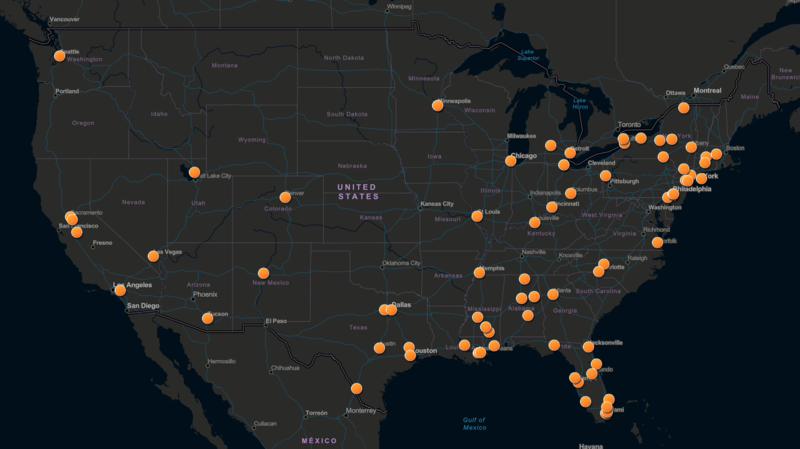Controversial almost everywhere, Katya Schwenk, former staff member for the award-winning independent VT Digger, finally spotlighted these plans that flew under-the-radar in a contract award up in front of the Mesa Council back in June, almost three months ago.
In Mesa, Millions of Covid Relief Funds Will Go To High-Tech Police Surveillance
Here's glance at her report in Phoenix New Times today:
(Image inserted is taken from an earlier post on this blog
Phoenix New Times:
> Currently, $3.3 million of the $52 million Mesa received in the American Rescue Plan Act (ARPA) earlier this year is earmarked for the center.
> (The city will still have to foot the bill for staffing and remodeling, without the help of the relief money.) City leaders say they hope to have the system up and running by December.
"It’ll be very high tech,” deputy city manager Michael Kennington promised the city council at an August 26 meeting.
Mesa’s mayor, John Giles, has since greenlit the proposal. . .
> “Police departments have seen [the grant money] as a way to pay for all of the fancy technology and equipment they’ve always wanted, but never had a reason or the funding to get,” said Matthew Guariglia, a policy analyst at the Electronic Frontier Foundation, an organization that monitors law enforcement surveillance. . .
> Mesa, whose police department boasts that its crime rate has dropped to "the lowest in recorded history," received a $52 million ARPA grant in May. . .The $3.3 million dedicated to the real-time crime center comes out of the pool of $8 million that is meant for "public health." Public safety payroll was eligible for CARES Act funds, while other areas of city government were not.
Andre Miller, a pastor and longtime civil rights advocate in Mesa, told Phoenix New Times he found the budget increase to be “obscene."
"The funds were meant to assist citizens of the city of Mesa," he said, adding that he was frustrated by the city's recurring investments in law enforcement over community or social services.
"The funds were meant to assist citizens of the city of Mesa," he said, adding that he was frustrated by the city's recurring investments in law enforcement over community or social services.
According to the Atlas of Surveillance, which tracks such centers across the country, there is currently only one other real-time crime center in Arizona, at the Tucson police department.
Mesa’s planned expenditures on its project, too, are notably high: Atlanta, which is roughly the same size as Mesa, spent just over a million on its center. Other cities, according to one report, spend far less.
“Because they're expensive, because they’re big, there's a long history of departments doing anything they can to pay for them and for the technology to fill them up,” Guariglia explained. Some departments have even used private donors or corporate sponsors.
“Because they're expensive, because they’re big, there's a long history of departments doing anything they can to pay for them and for the technology to fill them up,” Guariglia explained. Some departments have even used private donors or corporate sponsors.
Then, "they link up to as much surveillance as the department has."
> Mesa police chief Ken Cost replied that the policy was “being developed right now.”
> (In an email to New Times, Kennington clarified that the city already follows federal privacy guidelines on privacy and “will continue to follow these guidelines.”)
READ MORE >
===========================================================================
On agenda: | 6/21/2021 |
| Title: | Five-Year Term Contract for the Purchase of Axon Flex On-Body Camera Equipment, Supplies and Evidence.com Storage and Controlled Electrical Weapon Equipment and Supplies for the Mesa Police Department (Replacements/Upgrades) (Sole Source) (Citywide) The Police Department began using Axon Flex On-Body Cameras (OBCs) in 2012 and using Controlled Electrical Weapon (CEW) equipment in 2011. In addition to hardware, the Police Department purchased five years of secure cloud data storage through Evidence.com. This contract includes an Axon refresh plan for OBCs and docks, which will cycle to the most current format every 2.5 years. Also, regarding CEWs, a warranty is included which covers the devices for the entirety of the contract. These provisions will ensure that program costs are evenly dispersed, the program can be sufficiently maintained, and will be financially supported for the foreseeable future without the need to purchase any replacement devices or docks which may get damaged... |
| Attachments: | 1. Council Report |







No comments:
Post a Comment